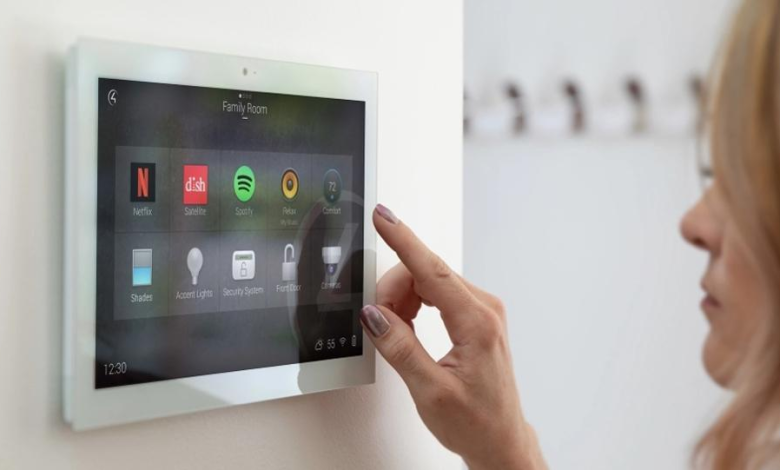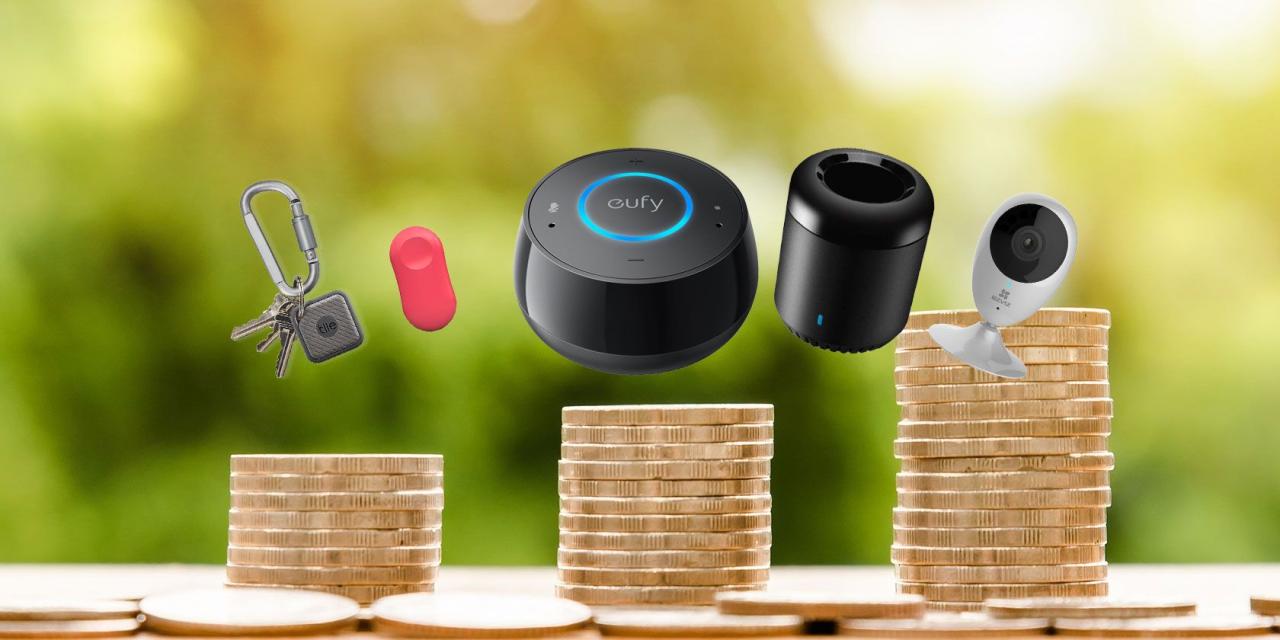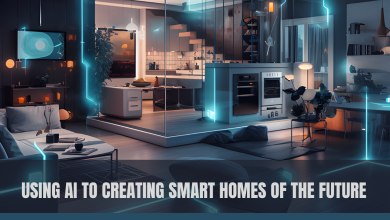Innovative Gadgets Drive Smart Home Revolution

In today’s rapidly evolving digital landscape, smart homes are no longer just a futuristic concept—they are a present-day reality. At the heart of this transformation lie innovative gadgets that simplify daily living, enhance security, and create an ecosystem of connected devices. This article explores how cutting-edge technologies are revolutionizing our living spaces, making homes more efficient, secure, and responsive to the needs of their occupants. We will delve into the evolution of smart homes, discuss the latest gadgets driving this revolution, and analyze the benefits and challenges that come with the integration of these advanced technologies. Ultimately, this comprehensive review serves as a guide for homeowners, tech enthusiasts, and industry professionals looking to navigate and maximize the potential of smart home innovations.
The Evolution of Smart Homes
The concept of smart homes has progressed from basic automation to fully integrated systems that manage everything from lighting and temperature to security and entertainment. Early home automation systems provided simple remote control of devices; however, recent advancements in Internet of Things (IoT) technology have given rise to complex ecosystems where gadgets communicate seamlessly with one another.
Smart home technology has evolved in several phases:
A. Early Automation
- Basic Control Systems: Initially, smart home devices were limited to programmable thermostats, lighting timers, and security alarms.
- Remote Access: Early systems allowed users to control some home functions through rudimentary remote interfaces.
B. Integration of IoT
- Interconnected Devices: The introduction of IoT enabled devices to connect over wireless networks, sharing data and automating processes based on user behavior.
- Cloud-Based Management: With cloud computing, homeowners gained the ability to control devices via smartphones and voice assistants, irrespective of their location.
C. The Era of Artificial Intelligence
- Predictive Analytics: AI-driven systems can learn user habits and adjust home settings automatically to optimize comfort and energy efficiency.
- Voice-Controlled Assistants: Gadgets like smart speakers and home assistants have become central control hubs, simplifying interactions through natural language processing.
The progression from basic automation to fully integrated, AI-powered smart homes highlights the significant strides technology has made. Today, a multitude of innovative gadgets work together to create an ecosystem where convenience, security, and efficiency converge.
Innovative Gadgets Transforming Smart Homes
Modern smart homes are defined by a variety of innovative gadgets that address diverse aspects of home management. These devices not only enhance convenience but also offer improved security and energy efficiency. Let’s examine some of the key gadgets that are driving the smart home revolution.
A. Smart Speakers and Voice Assistants
Smart speakers serve as the central hub for many smart home systems. Devices like Amazon Echo, Google Home, and Apple HomePod allow users to control multiple functions using simple voice commands. Their capabilities include:
A. Voice-activated control of lighting, thermostats, and appliances.
B. Integration with music streaming services and multimedia systems.
C. Real-time information updates, such as weather and news.
D. Interfacing with third-party applications to manage home security and automation.
B. Intelligent Lighting Systems
Smart lighting is more than just remote control; it’s about creating an adaptable environment that responds to your mood and needs. Innovations in this area include:
A. LED bulbs with adjustable brightness and color temperatures.
B. Motion sensors that automatically adjust lighting based on occupancy.
C. Energy-saving features that reduce power consumption when rooms are unoccupied.
D. Integration with voice assistants for seamless control.
C. Smart Thermostats
Smart thermostats are designed to learn your schedule and preferences, optimizing heating and cooling for both comfort and energy efficiency. They offer features such as:
A. Automatic adjustments based on occupancy and weather forecasts.
B. Remote control through smartphone applications.
C. Energy consumption reports to help reduce utility bills.
D. Integration with other smart home systems for holistic climate control.
D. Home Security Gadgets
Security is a paramount concern for homeowners, and innovative gadgets are playing a pivotal role in modernizing home security systems. These devices include:
A. Smart doorbells equipped with cameras for real-time visitor monitoring.
B. Wireless security cameras that provide live streaming and motion detection alerts.
C. Intelligent locks that allow remote access and temporary digital keys for visitors.
D. Integrated alarm systems that connect with mobile devices for instant alerts.
E. Connected Appliances
The smart home revolution extends to everyday appliances that now offer connectivity and automation. Examples include:
A. Refrigerators with touchscreen interfaces that can track groceries and suggest recipes.
B. Washing machines and dryers that notify you upon cycle completion and can be controlled remotely.
C. Ovens and microwaves that offer smart cooking modes and remote monitoring.
D. Robotic vacuum cleaners that map your home and schedule cleaning routines automatically.
F. Energy Management Systems
Energy management is a critical component of smart homes, aimed at reducing consumption while enhancing efficiency. Key gadgets include:
A. Smart meters that provide real-time energy usage statistics.
B. Solar panel systems with integrated monitoring software to optimize energy production.
C. Home battery storage systems that balance power usage during peak and off-peak hours.
D. Smart plugs and switches that allow for precise control over energy consumption.
G. Health and Wellness Gadgets
Modern smart homes are increasingly integrating devices that monitor and improve the well-being of their occupants. These gadgets include:
A. Air quality monitors that track pollutants and allergens.
B. Smart water filters that ensure clean drinking water and monitor usage.
C. Fitness trackers that integrate with home systems to adjust workout environments.
D. Sleep monitoring devices that adjust lighting and temperature to enhance rest quality.
The Impact of Innovative Gadgets on Daily Living
The integration of innovative gadgets into smart homes has profound effects on everyday life. From simplifying routine tasks to offering enhanced security and personalized comfort, these devices have reshaped how we interact with our living spaces.
A. Enhanced Convenience
One of the primary benefits of smart home gadgets is the unparalleled convenience they offer. With centralized control systems and automation, many tasks that once required manual intervention are now handled effortlessly by connected devices.
- Automated Routines: Imagine waking up to a perfectly brewed cup of coffee, your preferred room temperature, and soft music playing in the background—all orchestrated by your smart home system.
- Remote Management: Even when you’re away from home, you can control appliances, adjust security settings, and monitor energy usage from anywhere in the world.
B. Improved Energy Efficiency
Smart gadgets are designed to optimize energy usage, reducing waste and lowering utility bills. Through real-time monitoring and intelligent control, these devices ensure that energy is used only when necessary.
- Adaptive Climate Control: Smart thermostats adjust heating and cooling based on occupancy patterns and weather conditions, ensuring optimal energy consumption.
- Intelligent Lighting: Automated lighting systems reduce power consumption by dimming or turning off lights in unoccupied areas.
- Energy Reports: Detailed analytics provided by smart meters and connected appliances help homeowners identify areas for further energy savings.
C. Enhanced Security and Safety
Home security has been significantly bolstered by innovative gadgets. Modern systems integrate multiple devices to provide comprehensive protection against intrusions and emergencies.
- Real-Time Alerts: Security cameras and smart doorbells notify homeowners immediately if suspicious activity is detected.
- Remote Monitoring: Even when away, you can monitor your home’s security systems via smartphone apps.
- Integrated Systems: By linking various security devices, smart homes can offer a layered defense mechanism that is difficult for intruders to bypass.
D. Personalized Comfort and Health
Smart home technologies enable a level of personalization that enhances comfort and well-being. Devices can adapt to individual preferences, ensuring a living environment tailored to your lifestyle.
- Customized Environments: From adjustable lighting and temperature to personalized media settings, smart homes cater to your unique tastes.
- Health Monitoring: Gadgets that track air quality, water purity, and even sleep patterns contribute to a healthier living space.
- Interactive Systems: Voice assistants and integrated interfaces allow users to make real-time adjustments, ensuring that their home environment is always aligned with their needs.
Connectivity and Integration of Smart Home Gadgets
A critical factor in the success of smart home technology is the seamless connectivity and integration of various devices. Modern smart home ecosystems are built on networks that allow gadgets to communicate and work together harmoniously.
A. Internet of Things (IoT)
The backbone of smart home connectivity is the Internet of Things. IoT enables devices to collect, exchange, and act on data without human intervention. Key aspects include:
A. Interoperability: Devices from different manufacturers can work together if they adhere to common standards.
B. Real-Time Data Exchange: Continuous communication between gadgets allows for dynamic adjustments based on real-time conditions.
C. Scalability: IoT networks can easily accommodate new devices as technology evolves, ensuring that your smart home remains up-to-date.
B. Unified Control Systems
Centralized control systems are essential for managing the myriad of devices within a smart home. These platforms serve as the command center, providing a single interface to control and monitor all connected gadgets.
A. Voice Assistants: Devices like smart speakers act as central hubs, enabling voice-activated control.
B. Mobile Applications: Smartphone apps offer remote control and monitoring capabilities, making it easy to manage your home from anywhere.
C. Dashboards and Analytics: Centralized dashboards provide insights into energy usage, security alerts, and overall system performance.
C. Integration with Cloud Services
Cloud computing plays a significant role in enhancing smart home functionality. By storing data on remote servers, cloud services enable advanced features such as predictive analytics, remote monitoring, and real-time updates.
A. Data Storage and Analysis: Cloud platforms collect and analyze data from various devices, helping optimize system performance.
B. Remote Access: Homeowners can manage their smart home systems from any location, thanks to secure cloud connectivity.
C. Software Updates: Cloud-based systems facilitate automatic updates, ensuring that your gadgets always have the latest features and security enhancements.
Challenges and Considerations
Despite the remarkable benefits, the integration of innovative gadgets into smart homes is not without its challenges. Understanding these hurdles is critical for anyone looking to adopt smart home technology.
A. Security and Privacy Concerns
One of the most significant challenges is ensuring the security of interconnected devices. With data being transmitted across networks, there is always the risk of unauthorized access.
A. Cybersecurity Threats: Smart home devices can be vulnerable to hacking if not properly secured.
B. Data Privacy: The collection and storage of personal data by various devices can raise privacy concerns.
C. Regular Updates: Manufacturers must consistently update firmware to address security vulnerabilities.
B. Compatibility Issues
Integrating devices from different manufacturers can sometimes lead to compatibility issues, where gadgets fail to communicate effectively.
A. Standardization Challenges: Lack of universal standards can create barriers to seamless integration.
B. Fragmented Ecosystems: Homeowners might face difficulties in managing devices from various brands if they do not support a unified platform.
C. Ongoing Maintenance: Regular troubleshooting and updates are required to ensure smooth operation.
C. Cost Considerations
While smart home gadgets offer significant advantages, the initial investment can be substantial. Balancing cost with functionality is a key consideration for many consumers.
A. Upfront Costs: High-quality smart devices often come with a premium price tag.
B. Long-Term Savings: Despite the initial expense, energy savings and enhanced security can lead to cost reductions over time.
C. Scalability Expenses: Expanding a smart home ecosystem may require additional investments as technology advances.
D. Complexity and User Adoption
For many users, the complexity of setting up and managing a smart home can be daunting. Ensuring that technology is accessible to non-technical users is essential.
A. User-Friendly Interfaces: The design of control systems must be intuitive and easy to navigate.
B. Comprehensive Support: Manufacturers should provide robust customer support and clear documentation.
C. Gradual Integration: Adopting smart home technology in phases can help users adjust without feeling overwhelmed.
Best Practices for Smart Home Adoption
To maximize the benefits of innovative smart home gadgets while mitigating potential drawbacks, homeowners should consider the following best practices:
A. Thorough Research and Planning
Before investing in smart home technology, it is essential to understand your needs and the available options. This includes:
A. Assessing Requirements: Determine which functions are most important—be it security, energy management, or convenience.
B. Comparative Analysis: Research various products and platforms to find those that offer the best compatibility and features.
C. Future-Proofing: Consider devices that can be updated or expanded as technology evolves.
B. Prioritizing Security
Security should be a top priority when setting up a smart home. Implement the following measures:
A. Strong Passwords and Authentication: Use robust passwords and multi-factor authentication for device access.
B. Regular Software Updates: Ensure that all devices receive timely firmware and software updates.
C. Network Segmentation: Consider creating separate networks for smart home devices to isolate them from critical personal data.
C. Streamlining Integration
Achieving a seamless smart home experience requires careful integration of various devices. Best practices include:
A. Unified Platforms: Choose ecosystems that allow multiple devices to operate under one centralized system.
B. Vendor Collaboration: Opt for products from manufacturers that actively collaborate on compatibility standards.
C. Professional Consultation: Consider hiring experts to design and install complex systems if needed.
D. Continuous Monitoring and Optimization
Once your smart home system is in place, regular monitoring and optimization can ensure optimal performance.
A. Data Analytics: Use built-in analytics tools to track energy usage, device performance, and security events.
B. User Feedback: Regularly assess user experience and make adjustments based on feedback from all household members.
C. Scalability Reviews: Periodically evaluate whether additional gadgets or updates are needed to meet evolving needs.
Future Trends in Smart Home Technology
The smart home industry is dynamic and constantly evolving. Several trends are poised to shape the future of smart living, driving further innovation and integration.
A. Artificial Intelligence and Machine Learning
AI and ML will continue to enhance the capabilities of smart home gadgets. Future developments include:
A. Predictive Maintenance: Devices may predict when maintenance is needed, reducing downtime and extending lifespans.
B. Adaptive Environments: AI will enable homes to adjust settings automatically based on user behavior and environmental factors.
C. Personalized Experiences: Machine learning algorithms can tailor home environments to individual preferences more precisely over time.
B. Enhanced Interoperability
Efforts to establish universal standards are expected to improve the interoperability of smart home devices, making integration smoother and more reliable.
A. Standard Protocols: Development of standardized communication protocols will help diverse devices communicate seamlessly.
B. Cross-Platform Compatibility: Future smart home ecosystems may support a broader range of products, regardless of brand or manufacturer.
C. Unified User Interfaces: Streamlined control interfaces will make it easier for users to manage multiple devices from a single platform.
C. Expansion of IoT Networks
As IoT networks continue to grow, the number and variety of smart home devices will expand exponentially. This will lead to:
A. More Connected Devices: An increasing number of household gadgets will become connected, from kitchen appliances to outdoor security systems.
B. Enhanced Data Collection: Greater connectivity will provide more detailed insights into home usage patterns, enabling further optimization.
C. Innovative Applications: New use cases for smart home technology will emerge, driven by advancements in connectivity and sensor technology.
D. Focus on Sustainability
Sustainability is becoming a key consideration for consumers and manufacturers alike. Future smart homes will likely incorporate eco-friendly features, such as:
A. Energy-Efficient Appliances: Integration of appliances designed to minimize energy usage without compromising performance.
B. Renewable Energy Integration: Smart systems that can manage and optimize the use of renewable energy sources, such as solar panels and wind turbines.
C. Waste Reduction: Technologies that monitor and reduce waste in water and energy consumption will become more prevalent.
The Role of Consumer Feedback and Market Trends
The rapid evolution of smart home technology is largely driven by consumer feedback and market trends. As users experience the benefits and challenges of smart home devices, their insights influence future innovations.
A. Consumer-Centric Design
Manufacturers are increasingly focusing on consumer needs, ensuring that devices are not only technologically advanced but also user-friendly and accessible.
A. Ease of Use: Products are designed with intuitive interfaces and simple installation processes.
B. Customizability: Users demand devices that can be tailored to fit their unique lifestyles, leading to more adaptable and personalized solutions.
C. Reliable Support: Continuous customer support and regular updates are critical factors influencing purchasing decisions.
B. Market Dynamics and Competition
The smart home market is highly competitive, with numerous companies vying for consumer attention. This competition fosters innovation and drives improvements in both product quality and affordability.
A. Rapid Innovation Cycles: Companies invest heavily in R&D to stay ahead of trends and introduce groundbreaking features.
B. Cost Reduction: Increased competition often leads to lower prices, making advanced smart home technology accessible to a broader audience.
C. Diverse Offerings: The wide variety of available devices allows consumers to build comprehensive systems that meet their specific needs.
Case Studies: Smart Home Success Stories
Real-world examples illustrate how innovative gadgets have transformed homes into smart, efficient, and secure environments. Here are a few case studies that demonstrate the impact of smart home technology:
A. Urban Family Home
A family living in a metropolitan area integrated a comprehensive smart home system that automated lighting, climate control, and security. The system adjusted temperature settings based on occupancy and weather forecasts, resulting in a 20% reduction in energy costs. Real-time security alerts and remote monitoring provided peace of mind, especially during travel.
B. Suburban Eco-Friendly Residence
A suburban homeowner focused on sustainability installed a smart energy management system. By integrating solar panels, smart meters, and automated appliances, the residence significantly reduced its carbon footprint while lowering utility bills. The system’s ability to optimize energy consumption based on peak and off-peak hours made it a model for green living.
C. Tech-Savvy Professional Apartment
A single professional in a high-rise apartment adopted a minimalist smart home setup that included a voice-activated assistant, intelligent lighting, and a connected security system. The integration of these devices not only streamlined daily routines but also enhanced the overall living experience by creating a responsive and adaptive environment.
The Future Outlook: Continuous Innovation
As technology continues to advance, the potential for smart home innovation is virtually limitless. The integration of next-generation gadgets, enhanced AI capabilities, and improved connectivity will lead to even more sophisticated living environments. Homeowners can expect future systems to offer:
A. Deeper Personalization: Smart systems will further refine their ability to adapt to individual habits and preferences, providing truly personalized environments.
B. Increased Automation: Enhanced automation will lead to self-managing homes that require minimal human intervention while maximizing efficiency and comfort.
C. Greater Interconnectivity: The proliferation of IoT devices will foster an ecosystem where nearly every aspect of home life is seamlessly interconnected.
Conclusion
The smart home revolution, driven by innovative gadgets, is transforming the way we live, work, and interact with our environment. From voice-activated assistants and intelligent lighting to advanced security systems and energy management solutions, these technologies offer unparalleled convenience, enhanced security, and significant cost savings. While challenges such as security, compatibility, and complexity remain, the benefits far outweigh the obstacles when smart home systems are thoughtfully designed and implemented.
As we look to the future, continued advancements in AI, IoT, and cloud connectivity will push the boundaries of what is possible in smart home technology. Consumers are empowered to create personalized, efficient, and secure living spaces that not only enhance everyday life but also contribute to broader goals like sustainability and energy conservation. By staying informed about the latest trends and adopting best practices, homeowners can fully harness the transformative power of innovative smart gadgets.



